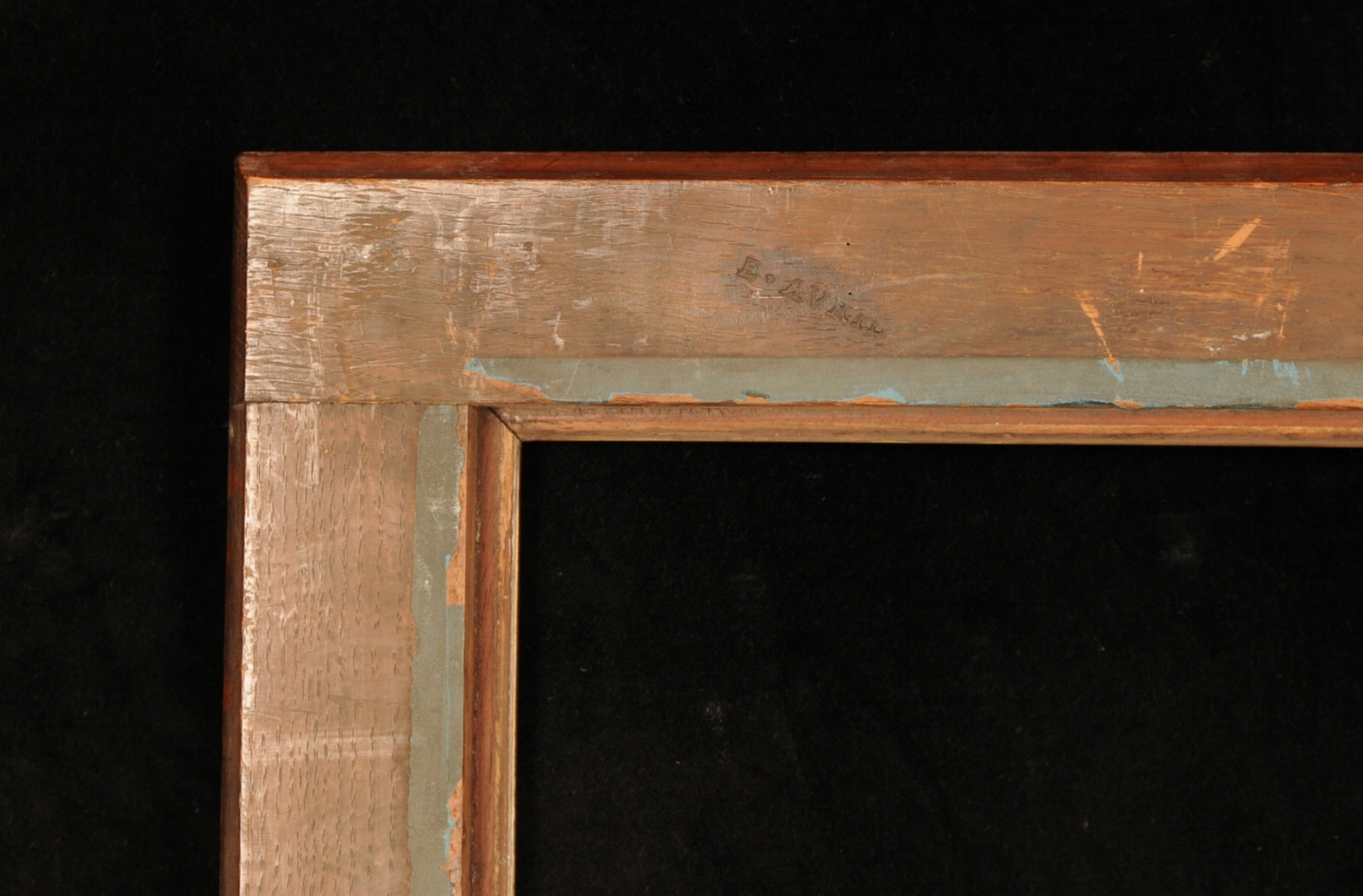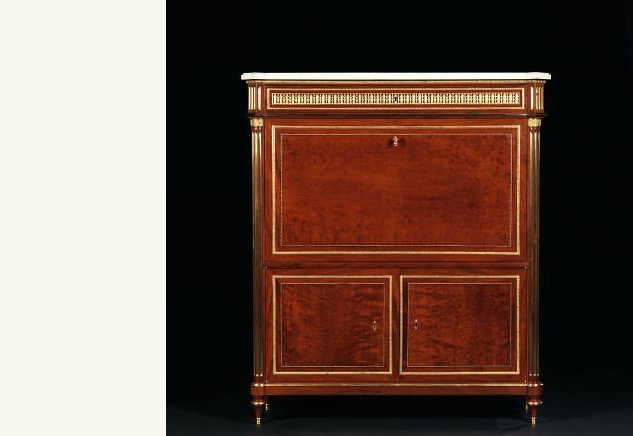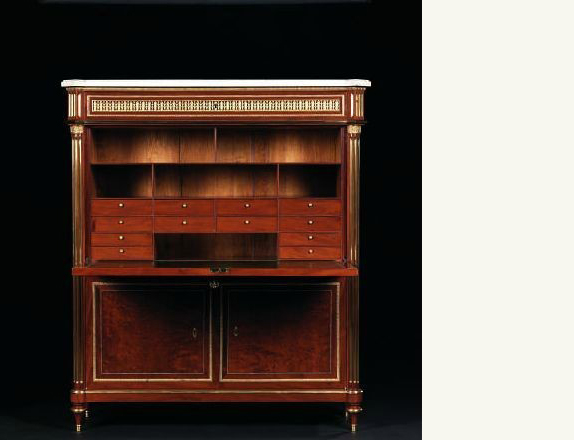Étienne Avril
A pair of French, circa 1780, mahogany frames with brass astragal mouldings.
Maker's stamp on the back, E Avril.
Sight size: 72.7 x 62.2 cm Section: 6.4 cm
This pair of frames by Étienne Avril are exemplary of his style as an ébéniste and characterise the taste for linearity in design during the Louis XVI epoch.
Straight sided and without ornament, the frames are severe in their neo classical taste. Made in a fine, close grained mahogany they are augmented by two bands of brass astragal mouldings which emphasise the linearity of the section. The frames are stamped on the back, E ∙ Avril.
Corner detail verso & recto
The mitred mahogany moulding is assembled on a tight, and well executed, half lapped oak back frame with a neatly chamfered back edge. This method and quality of construction is evidence of the work of an ébéniste rather than that of an encadreur, who would typically use a mitre and key construction.
The remainder of the blue paper next to the rebate would have sealed a backboard and glass into the frame. Evidence that the frames were made for works on paper, either print or drawing. Holes made by the original hanging hooks, now missing, indicate that the frames hung in a landscape format.
Étienne Avril, 1748 - June 24, 1791, was a French furniture designer, or ébéniste who became a maître-menuisier, of the guild of menuisiers-ébénistes, on 23rd November 1774, Paris. Avril’s shop was on Rue de Charenton, at the corner of Rue Moreau, but after the Revolution he moved to premises near the Porte Saint-Antoine, the furniture making district in 18th century Paris.
Secrétaire à abattant by Etienne Avril (1748-1791) Paris, circa 1780.
Estampillé E. AVRIL & marque JME.
Avril’s furniture is neo-classical in design, the fashionable style of the Louis XVI period. He was noted for making ‘commodes, consoles, bibliothèques, secrétaires et chiffonniers’ mostly in mahogany or satinwood although he also employed other woods such as lemon veneer and rosewood. The rigorous and clean lines of his furniture were accentuated by brass mouldings which often bordered panels of marquetry or exotic veneers. After 1775 he also began adding bisque porcelain to the design of his furniture. For example, he added two nymphs made of bisque to a wardrobe he designed for the Palace of Fontainebleau.
Michael Gregory
NOTES
Notable pieces of furniture by Etienne Avril are in the following collections:
Château de Fontainebleau - Louis XVI wardrobe in mahogany framed ebony
Musée Marmottan-Paris - Small Louis XVI wardrobe with two drawers, clad in rosewood
Museum of Decorative Arts-Lyon - An oval-shaped chiffonière Table
He produced pieces for Queen Marie Antoinette for Château de Saint-Cloud.







